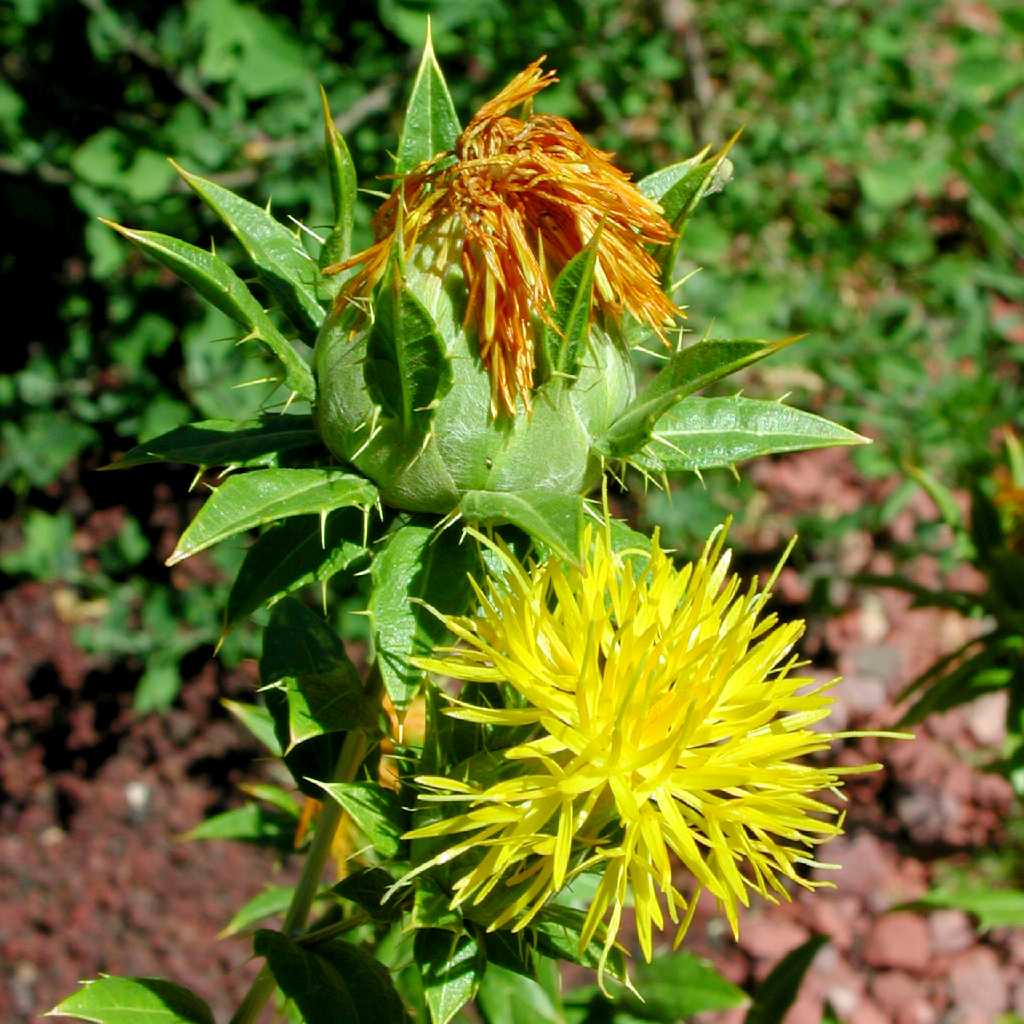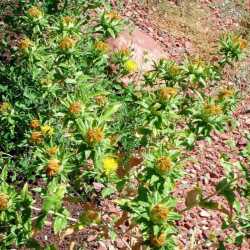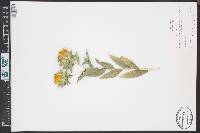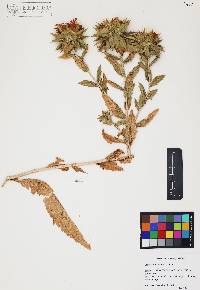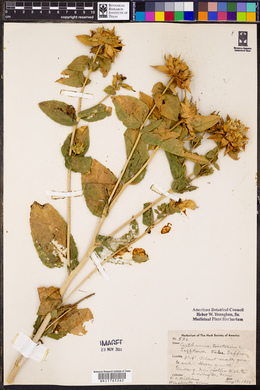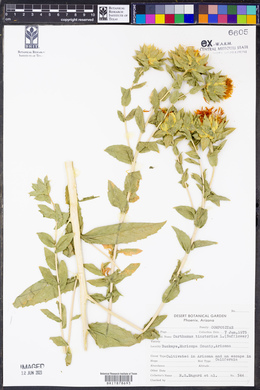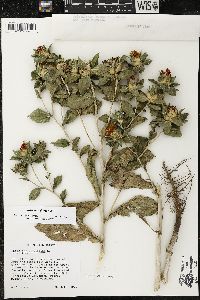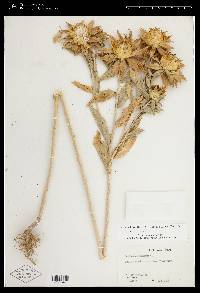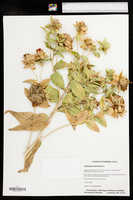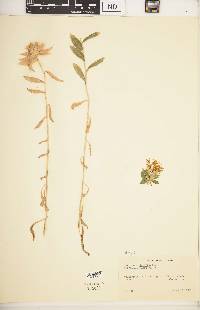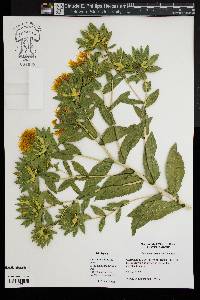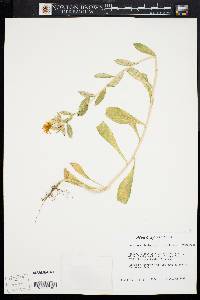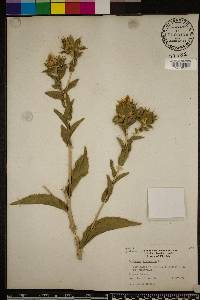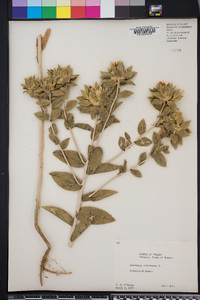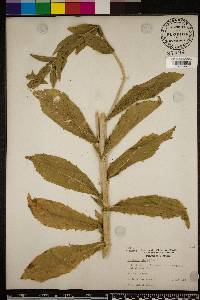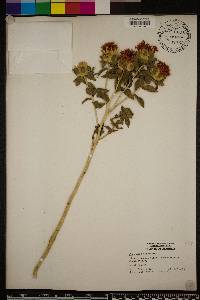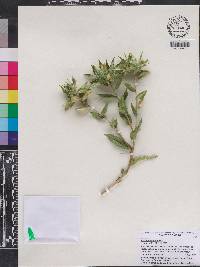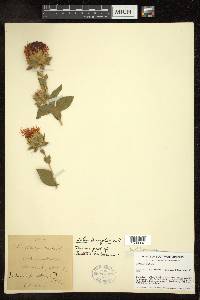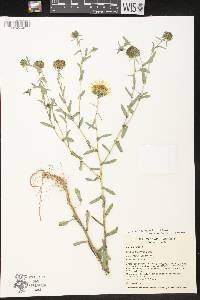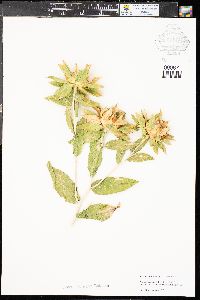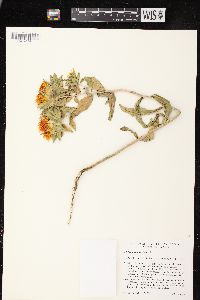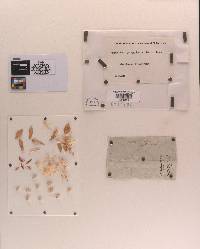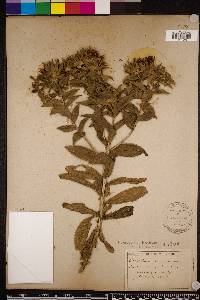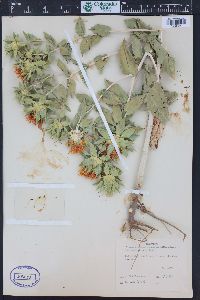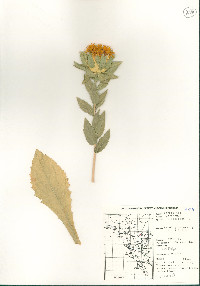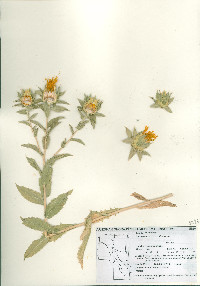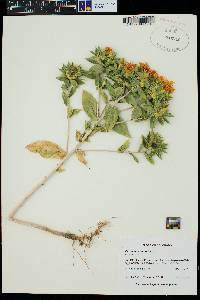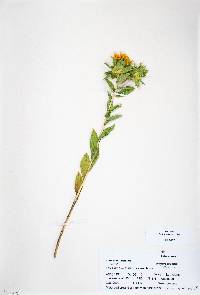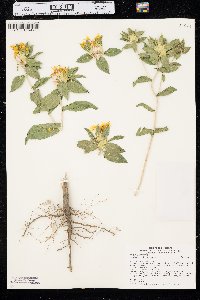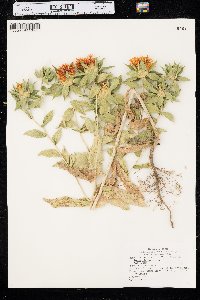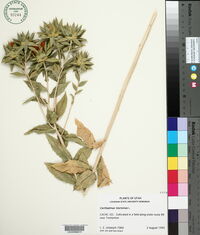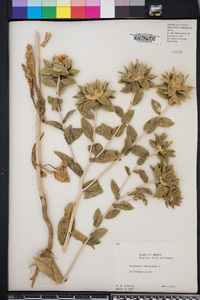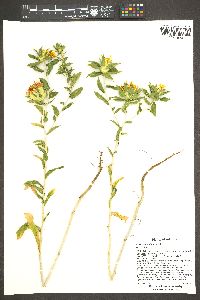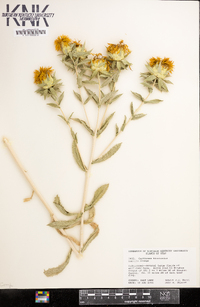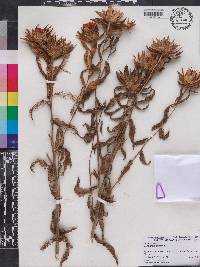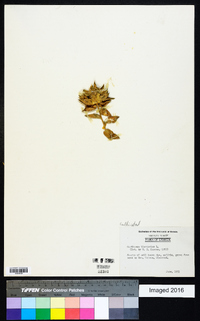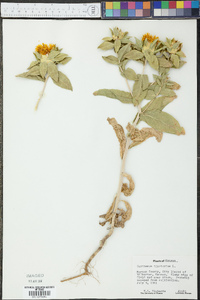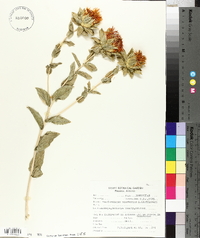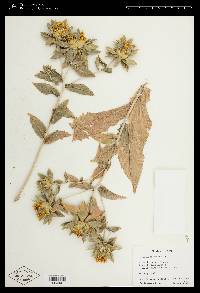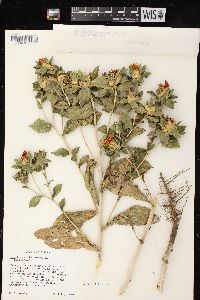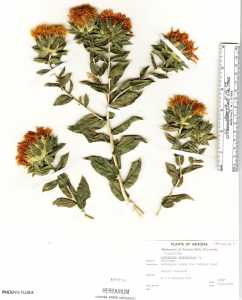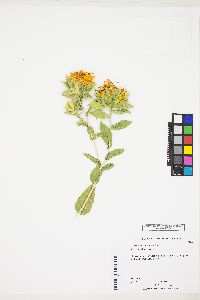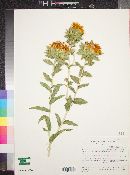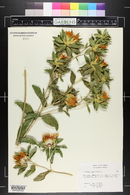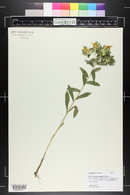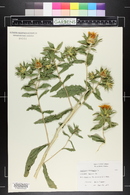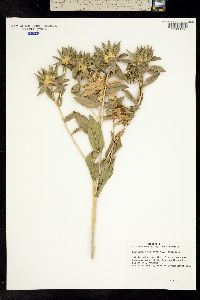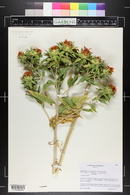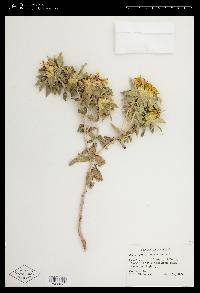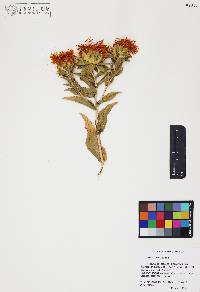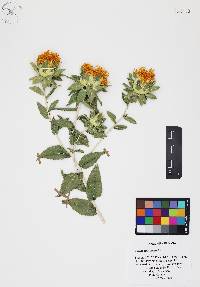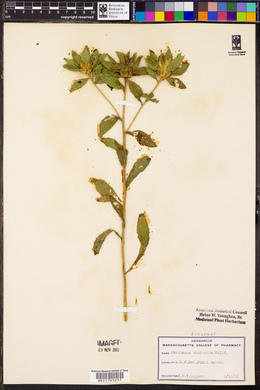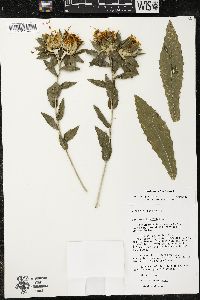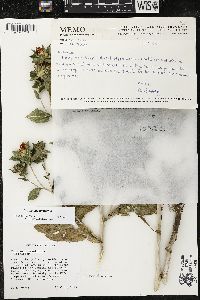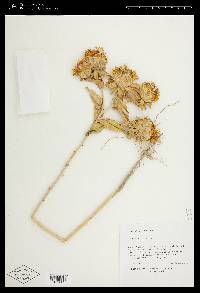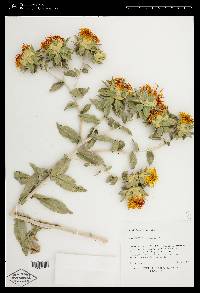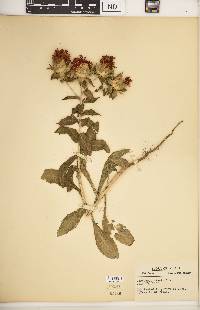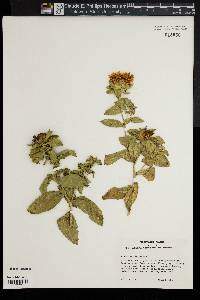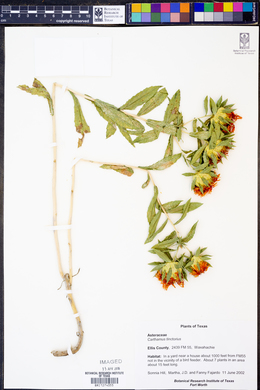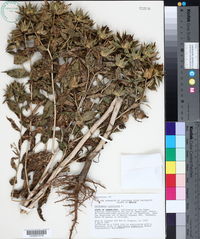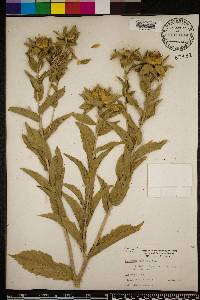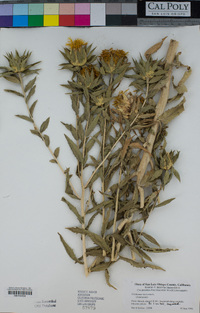Carthamus tinctorius
|
|
|
|
Family: Asteraceae
Safflower, more...Mexican saffron (es: cártamo, azafrán)
|
Plants 30-100+ cm, herbage ± glabrous. Stems ± stramineous, glabrous. Leaves usually all cauline, dark green; blades lanceolate to elliptic or broadly ovate, 2-8.5 cm, margins dentate with minutely spine-tipped teeth, veiny, shiny. Involucres ovoid, 20-40 mm diam., ± glabrous. Outer phyllaries spreading to reflexed, 1.5-2 times longer than inner, terminal appendages minutely spiny-toothed, minutely spine-tipped. Corollas yellow to red, 20-30 mm, throats abruptly expanded; anthers yellow to red; pollen yellow to red. Cypselae white, 7-9 mm, slightly roughened; pappus scales absent or if present, 1-4 mm. 2n = 24. Flowering late spring-summer (May-Aug). Escaped from cultivation in disturbed sites; 0-900 m; introduced; Alta., B.C.; Ariz., Calif., Colo., Idaho, Ill., Iowa, Kans., Mass., Mont., Nebr., N.Mex., N.Dak. Ohio, Oreg., Utah, Wash.; Europe. Carthamus tinctorius is apparently native originally to the eastern Mediterranean; it is known only in cultivation and as escapes today. Safflower has been reported from Texas; I have not seen the specimen. Safflower is cultivated as an oil seed, a source of vegetable dye, as birdseed, and as an ornamental. It is one of the earliest known crop plants, with cultivation dating back to prehistoric times. In the United States safflower is grown principally in California and Arizona; it has been a successful crop in every state west of the 100th meridian. Carthamus oxyacantha M. Bieberstein (wild safflower) was collected in 1978 in Monterey County, California. It is considered by the United States Department of Food and Agriculture to be a noxious weed subject to eradication if found. In central and southern Asia it is a pernicious weed of agricultural lands and other disturbed ground. Carthamus oxyacantha most closely resembles cultivated safflower; it has smaller heads and much spinier leaves. Its cypselae are usually darkly pigmented, smaller (4-5 mm versus 5.5-9 mm), and almost always lack pappi.
FNA 2006, Jepson 2012 Duration: Annual Nativity: Non-Native Lifeform: Forb/Herb General: Herbaceous annuals, to 1 m tall or more, stems straw-colored, leafy, stramineous (striated with parallell grooves or lines), usually erect, branching distally or throughout, herbage glabrous. Leaves: Alternate, usually all cauline, dark green and shiny, lanceolate to elliptic or broadly ovate, 2-8.5 cm long, basal and proximal cauline winged-petiolate, distal cauline sessile, sometimes clasping, blade margins dentate with minutely spine-tipped teeth, surfaces veiny. Flowers: Yellow to red in in discoid heads, these spiny and flat-topped, relatively large and showy, disk corollas conspicously exserted, 20-30 mm long with abruptly expanded throats and linear lobes, involucres ovoid, glabrous, 2-4 cm diameter, outer phyllaries spreading to reflexed, 1.5-2 times longer than inner, with minutely spiny-tipped terminal appendages, anthers and pollen also yellow to red, anther bases short-tailed, apical appendages oblong, style branches with short, minutely hairy, fused portions with slightly swollen basal nodes, infloresences of solitary heads or in few-headed cymiform arrays. Fruits: Cypselae (achenes) white, oblong to obpyramidal and more or less 4-angled, 7-9 mm long, surfaces slightly roughened. Pappus scales absent or if present 1-4 mm long. Ecology: Introduced annual, often found escaped from cultivation in disturbed sites and along roadsides, from 0-3,000 ft (0-914 m); flowering May-August. Distribution: British Columbia to Alberta, south to California and east to New Mexico, scattered across the middle protion of the United States including North Dakota, Nebraska, Kansas, Iowa, Illinois, Ohio and Massachusetts. Notably absent from Nevada and Texas. Ethnobotany: Flowers used to color wafer bread yellow for certain dances. Synonyms: None Editor: LCrumbacher2012 Etymology: Carthamus comes from the Arabic quartom, qurtum or qurtom meaning "to paint," alluding to the colors of the flowers or the extracted dye from tinctorius species, and tinctorius is used in dyeing, and usually used to refer to a plant that when broken exudes some kind of stain. Readily distinguished by its foliaceous outer invol bracts and bright orange fls, occasionally escapes from cult. Gleason, Henry A. & Cronquist, Arthur J. 1991. Manual of vascular plants of northeastern United States and adjacent Canada. lxxv + 910 pp. ©The New York Botanical Garden. All rights reserved. Used by permission. |
|
|
|

